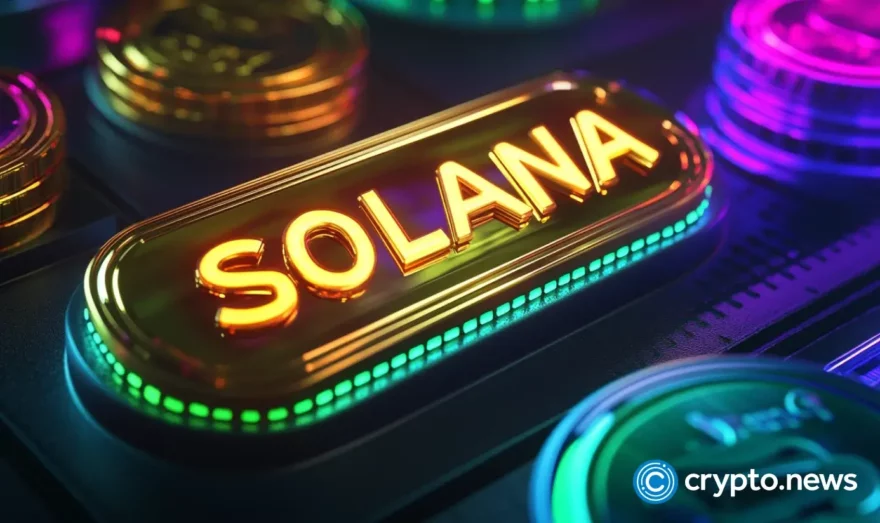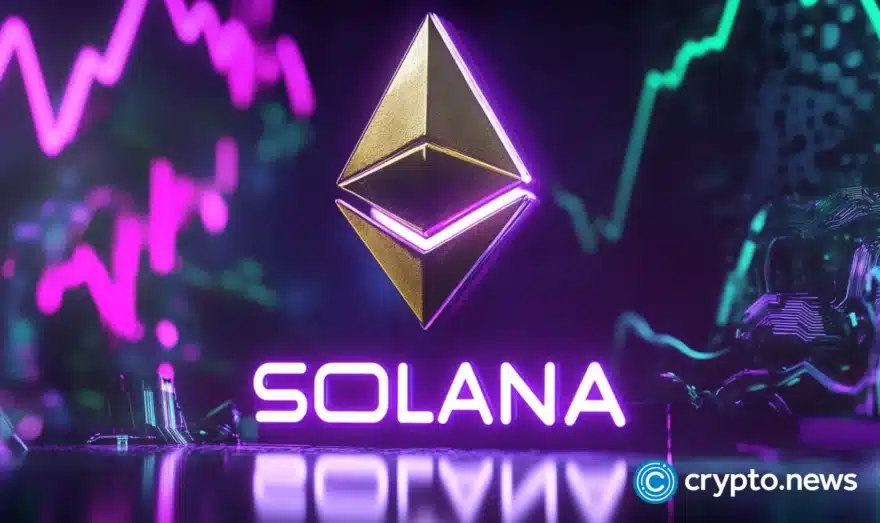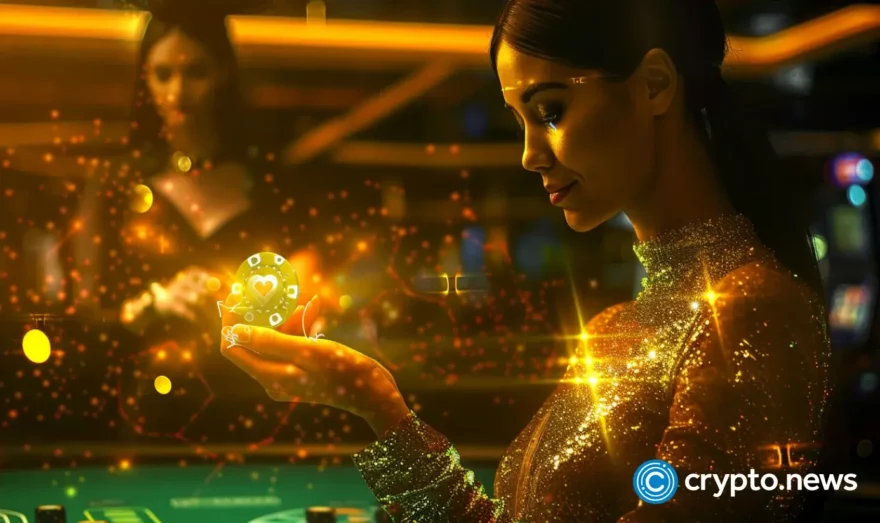10 myths about crypto games

Although the crypto games sector has grown significantly in recent years, occasional setbacks and deep-rooted myths have turned away many potential gamers and slowed the industry’s growth.
This article discusses the most common myths about crypto and blockchain games today and the facts and details that shed some light on them and reveal why these misconceptions may not be entirely correct.
We also highlight several games that, in our view, are ahead of the general competition in terms of the user interface, gameplay, and other important aspects that gamers consider when choosing a blockchain game. We list the most popular crypto games at the end of this article.
1. Crypto games are boring
The fact is, there have always been good games and bad games. It all depends on who is playing which game and at what time. There is a notion that crypto games are so boring that the game developers working on the game care more about monetization than the actual gameplay and mechanics. This myth is relevant for the first age of GameFi projects. This entire concept gives crypto games a bad reputation.
Some stunning crypto games are out there – such as Axie Infinity and Alien Worlds have stunning graphics.
In fact, the first wave of the crypto games was extremely simple and really boring, with nothing more than clicking one or two buttons to start what effectively was staking of farming. Their only build-on to the staking/farming was a one-step gameplay and some characters with no backstory. The second wave came completely different, claiming huge returns on assets deposited. These games’ activities and mechanics were more sophisticated, while tokenomics seemed highly unbalanced.
Currently, we’re facing the third wave where economics is well thought out, and gameplays are complex. No over-the-moon profits are promised, and games are developed enough to attract players from the traditional gaming world.
2. You can’t earn anything by playing crypto games
This is completely a myth. Play-to-Earn (P2E) crypto games are not only fun but also profitable. Unlike traditional video gaming, where your most notable achievements are in-game assets and quest completion, play-to-earn gaming allows you to earn cryptocurrencies from your gaming exploits in the crypto space.
Play-to-earn games are crypto games that allow players to enjoy gameplay features such as battles, breeding their in-game characters, completing quests, or other tasks. By completing such tasks, players receive some cryptocurrency or in-game tokens, which are then used to purchase NFTs or transferred directly to a crypto wallet and sold or traded for tokens or coins that can be used for real-world payments.
Most modern Crypto games tend to introduce their native tokens at very early stages and try listing those tokens with reliable centralized (CEX) or decentralized (DEX) crypto exchanges. Several examples include Sandbox, Alien Worlds, and Bluelight.inc, which have allowed their in-game token, $KALE, to be traded at the Cryptology exchange long before the open release, thus confirming that earned assets can be monetized easily.
3. Crypto games are pure scams
Blockchain is a technology for storing, processing, and communicating information. As with any other related, it can be used for fraudulent purposes by unscrupulous individuals. However, this does not automatically imply that blockchain or its applications are illegitimate.
Focusing on the use case of NFTs and blockchain for play-and-earn monetization in games. When implementing play-and-earn monetization, an NFT is an essential key that grants the player who holds the NFT the right to utilize in-game the specific item, service, or benefit the NFT represents. It is believed that the NFT market, in general, was an artificially pumped balloon, with close to 90% of the deals for NFT assets being done between related parties.
Some games like Crypto Kitties, Axie Infinity, and Amazy appeared to be examples of short-lived success, with the number of users, prices for assets, and token prices dropping sharply after the hype ended. This indicates why the do-your-own-research approach is imminent to crypto gaming, especially when you’re asked to deposit anything for the game to start.
Because it is a blockchain-based NFT, the player can also sell/transfer possession of the NFT and the in-game rights associated with it to someone else outside the game, potentially for real money. You’re giving players another option for what they can do with their digital in-game items. It is not a scam to give players new options while taking away none of their existing ones.
Some games are purely focused on the Play-to-Earn mechanics, and StepN is the best example here: you do the walking and receive tokens in return. There’s no room for imagination in the basic task, but the beauty of shoe upgrading adds to the fun. Some new-generation blockchain games are Free-to-Play, i.e., you need no visible money input to enjoy the game. The Bluelight.inc start-up development multiverse is an interesting case: no obligatory money investments with an upside to earn tokens once you prove to be an active player.
4. Play-and-earn is only of interest to gamers who want to make money
In countries such as India, Brazil, and the Philippines, there are stories of people quitting their day job and focusing on crypto games to earn a living. While this is true, it has brought about the myth that crypto games are just for people who want to make money. The truth is play–and–earn games have existed for years in the form of skin trading and gold farming.
In reality, there are plenty of games where you don’t have to spend 24 hours a day to reach the ultimate goal of being rewarded. The prevailing concept these days is that every player must have the option of playing as many hours as they want to enjoy the game without feeling left out or sliding to the bottom of the Hall of Fame.
This myth is outdated, and it comes from times when crypto gaming was something new, and the majority of games had no real gameplay. As of today, new titles come with a very well-thought-through narrative and detailed gameplay.
5. Blockchain and NFTs are terrible for the environment
The two first widely used blockchains, bitcoin (BTC) and ethereum (ETH), are the source of this myth. These employ proof-of-work protocols, which are inefficient and harmful to the environment. However, these blockchains account for only a small portion of all current blockchain activity (because bitcoin does not support NFTs, it is largely irrelevant in discussions about play-and-earn games).
To put this in context, there are approximately 25 million daily transactions across all blockchains, with the majority utilizing proof-of-stake. At the same time, ethereum accounts for only about 200,000 of these (less than 1%). Therefore, as long as you’re using a Proof-of-Stake blockchain like WAX, you can be sure your game’s energy use or carbon emissions won’t increase compared to running similar functions on your servers or in the cloud.
Most blockchain activity now occurs on more recent chains that employ a proof-of-stake protocol. Chains like WAX require no more energy to process a transaction than conventional e-commerce or game servers.
It is also important to consider the blockchain used for the particular crypto game. For example, Bluelight.inc is based on the ethereum chain with an option to switch to Binance Smart Chain. Some smaller or proprietary chains may need to improve in speed, reliability, and transaction costs, thus, reducing the trustworthiness of the game.
6. Designing trading platforms for real money within games would be simpler and better
This myth is promoted by people (particularly gamers) who need help understanding the components involved in establishing a real-money marketplace. At a fundamental technical level, yes, implementing such systems is probably not that difficult. It may improve the user interface for players, but proponents of this myth need to be made aware of the significant legal and regulatory issues that must be addressed to create a system that facilitates a real-money transaction between two third parties (e.g., players).
7. The metaverse is only appropriate for gamers
Contrary to popular belief, the metaverse is only partially a game. According to a survey, many people mention games like Roblox, Minecraft, and others when describing the metaverse. Users familiar with this concept spend approximately 1.5 hours playing video games.
According to the research, 20% of respondents have attended events such as concerts and virtual film festivals. 45% of people were interested in social games using AR/VR technology. Other interests include shopping, education, travel, socializing, and other activities.
While many old-school games were intended to lure in ‘traditional’ gamers who seek elves, orcs, trolls, magic wands, and related mythical-world patterns and game-plays, modern games often implement way more progressive scenarios. For example, Bluelight.inc is focused on something very close to the real world: building a start-up of our own and nursing the latter into a shining unicorn company. The tasks to be completed to achieve this goal are of corporate and management nature: forming a team, motivating it, starting and completing business projects, developing land plots and buildings, and exchanging and trading resources.
8. Crypto games are too complicated for crypto newbies
Just about anyone with a smartphone, a tablet, or even a laptop can understand crypto games. It is simple to play and earn with crypto games. The first step is to open a cryptocurrency gaming account which is typically accomplished by entering your name, email address, and password. After establishing an account, you’ll need to fund it with cryptocurrency.
This is accomplished by transferring funds from your regular cryptocurrency wallet or purchasing digital tokens directly from the game platform. At first, this may sound complicated, but in fact, the only thing you need to do is use a credit card to purchase crypto or use a centralized exchange (or an exchanger service). You can start playing games as soon as your account is funded. It’s that simple.
Crypto technologies keep developing, and while five years ago, the UX/UI of most blockchain projects was nearly nonexistent, in 2023, most distributed ledger technologies (DLT) employ interfaces and designs similar to those in any application you use daily. The same applies to DLT-based games.
9. Crypto games are not meant for the long term (they don’t last)
In the past few years, crypto game projects have failed. Crypto games such as Hunter Coin, Motocoin, Spells of Genesis, and Crypto Kitties are just a few.
The play-to-earn model has its challenges. Because drop prices are skyrocketing, it may cost hundreds of dollars to begin playing an NFT game. Sticking with a game for an extended period has little entertainment value if the gameplay is overly simple or uninspired. This is usually the main reason why some crypto game projects fail. And that is just a fact.
But other projects, such as Axie Infinity and Sandbox, have truly withstood the tests of time. By controlling bots, having a balanced economy, and considering fun as the backbone of the game then, crypto games have the potential to be long-term.
10. Crypto games have difficult mechanics
This is not true. Most crypto game scenarios and game-plays are not based on distributed ledger technology. It means you don’t have to understand cryptography, run your nodes, or understand how different types of consensus work.
When blockchain is added to the games, this is to use a safer base for accounting your assets, fairly assessing those, and enabling transfers independent from the third party, i.e., game runners.
Another reason for using blockchain is to link the game to depositing and withdrawing digital assets with no or minimal interaction between the game and the fiat world. This seems logical, given that cryptocurrencies are way simpler than traditional banking and payment systems.
Final thoughts
Crypto games are here to stay. Since crypto games are still in their infancy stage, they are normally misunderstood and judged, leading to all these myths about them; however, a little information and awareness on this topic can go a long way in helping both newbies and experienced gamers in taking that first step into the play-to-earn crypto space.
Currently, there are about 100 reasonably popular crypto games. The most well-known are Axie Infinity, Alien Worlds, Decentraland, Sandbox, Bluelight.inc, Blankos, Star Atlas, Sidus Heroes, Delysium, Dark Forest, Skyweaver, Splinterlans, and Farmers World.
Disclosure: This content is provided by a third party. crypto.news does not endorse any product mentioned on this page. Users must do their own research before taking any actions related to the company.














